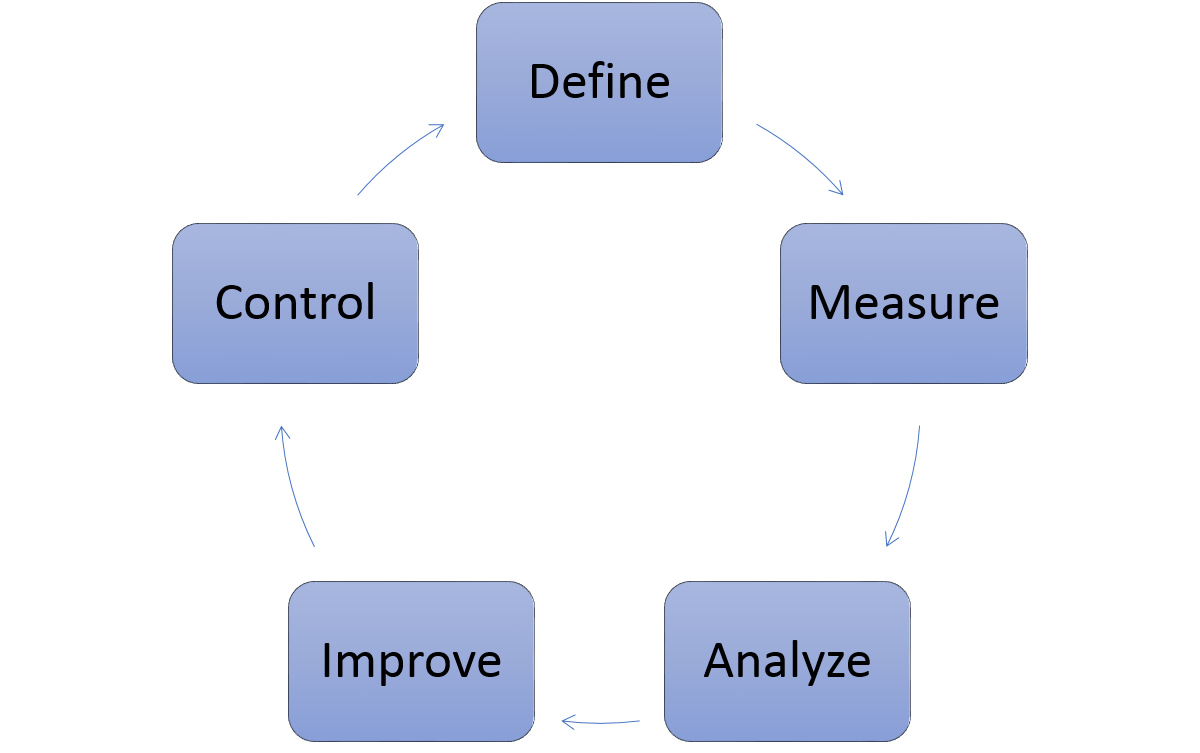Recently I have been coaching some newly trained Green Belts (GBs) doing DMAIC projects and observed very similar struggles many organizations experience. For example,
- Making little progress because of no time or resources
- Stuck in the Define phase two months after the project start
- Confused by the tools and their applicability in the project
- Overwhelmed by the number of deliverables for each phase
- Taking a long time to obtain data to establish the baseline
This happens in a manufacturing setting where metrics, data, and business cases are readily available. In a non-production environment, things can be murkier.
For years I was on the teams deploying Lean Six Sigma in two global organizations and have supported many others as a trainer, coach, and consultant. Although a GB Six Sigma project should be done in 3 to 6 months, it is not uncommon to see most of the GBs unable to finish their first projects six months after the training. A significant portion do not complete their projects even after 12 months.
Although the reasons for such struggles vary among organizations, some mistakes occur with high frequency. Most of the mistakes can be explained by the organization’s low Six Sigma maturity and lack of adequate resources. One can start understanding this problem by asking the three questions I posted last year in Starting Lean Six Sigma.
- What is the reason to bring in the methodology?
- What are the specific and measurable goals to justify the investment?
- What is the organization’s experience in managing change?
These questions help organizations set the right deployment strategy and avoid disappointment due to misinformed expectations. With the right strategy in place, there are still critical execution details to consider when starting out.
Selection of the GB candidate to lead the project
This decision is the most crucial factor of project success. Does the person have the technical capability, leadership skills, and most importantly, the personal drive to lead the project? If this is your first or second wave of Six Sigma projects, choose absolutely only the most promising, capable leaders for Green Belt or Black Belt training. If not, they are unlikely to succeed in a low maturity Six Sigma environment.
Selection of the Six Sigma project
While most organizations choose projects from their business portfolios that have significant business impact, many fail to consider other key factors. One factor is suitability as a DMAIC project or the first Six Sigma project for an inexperienced leader. One example is an implementation project that should be “Just do it.” Another involves a poorly understood process, which leads to convoluted objectives and/or an impossibly large scope.
Training and coaching of project sponsors
The project sponsors own the projects and have the most influence on the GB. They approve the project charters, review deliverables at the DMAIC toll gates, and make resources and other critical decisions. Few GBs have the luck of having a sponsor who is well versed in the Six Sigma methodology. Not providing sponsor training prior to project and candidate selection is a common but avoidable mistake. A one-day training and some ongoing coaching of the sponsors is sufficient in most cases.
Training and coaching of GBs
Most organizations deploying Six Sigma provide some form of training and coaching, which is essential to GB’s learning and project success. Generic Six Sigma training may be less costly upfront, but GBs will have a harder time applying the methodology correctly and require much more intensive coaching. In my classes, GBs learn much more effectively if the content and format are specific to the industry or customized to their jobs. In addition, companies often underestimate the amount of coaching required and overestimate the impact the coaches can have. This is only exacerbated by poor project and candidate selection, lack of sponsor training, and ineffective training of the methodology.
Lean Six Sigma can transform an organization. But it takes time, commitment, and the right approach. The challenges we often see are not necessarily inherent in the methodology and can be overcome by the right deployment strategy and method.

Comments
3 responses to “The First Six Sigma Project”
[…] discussed in my earlier blogs about some related challenges in “Starting Lean Six Sigma” and “The First Six Sigma Project.” By understanding how Lean Six Sigma fits in the organization’s objectives, strategy, and […]
[…] I discussed training and coaching considerations in LSS deployment in The First Six Sigma Project and recommended customized training in Making Employee Training […]
[…] Select the right projects and leaders and provide training and coaching (The First Six Sigma Project) […]